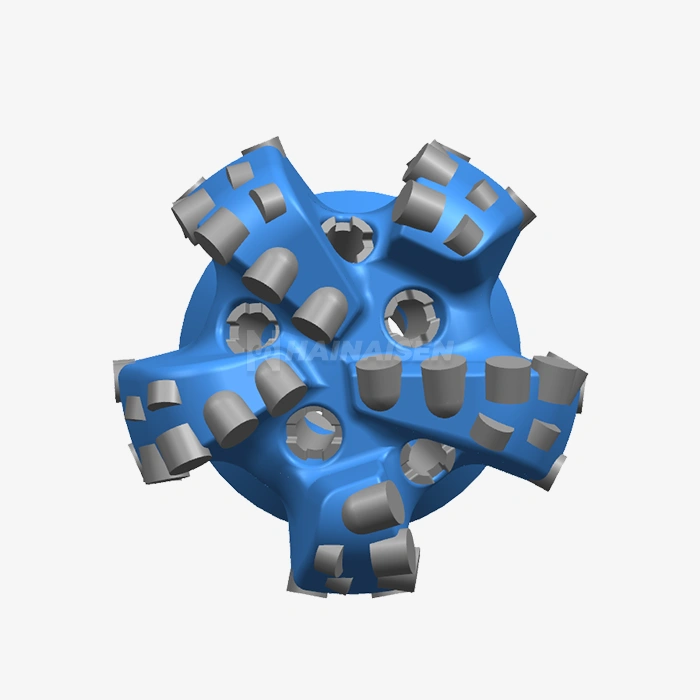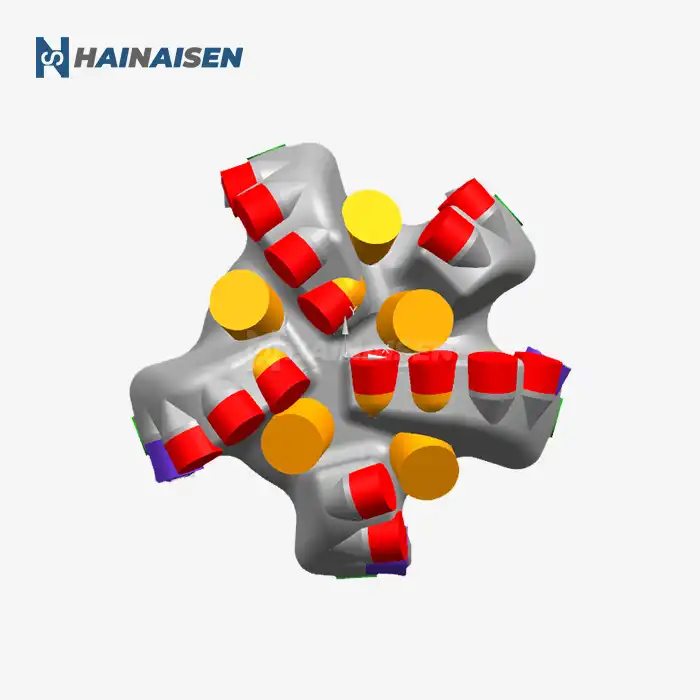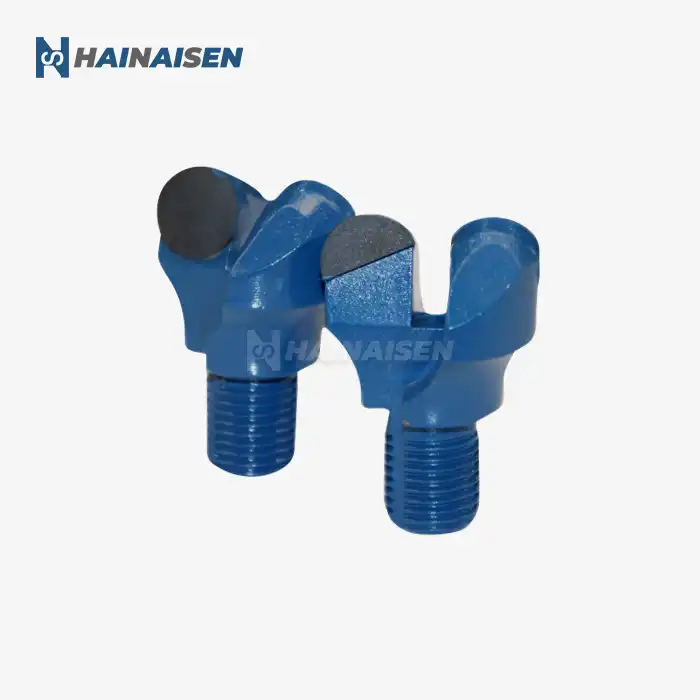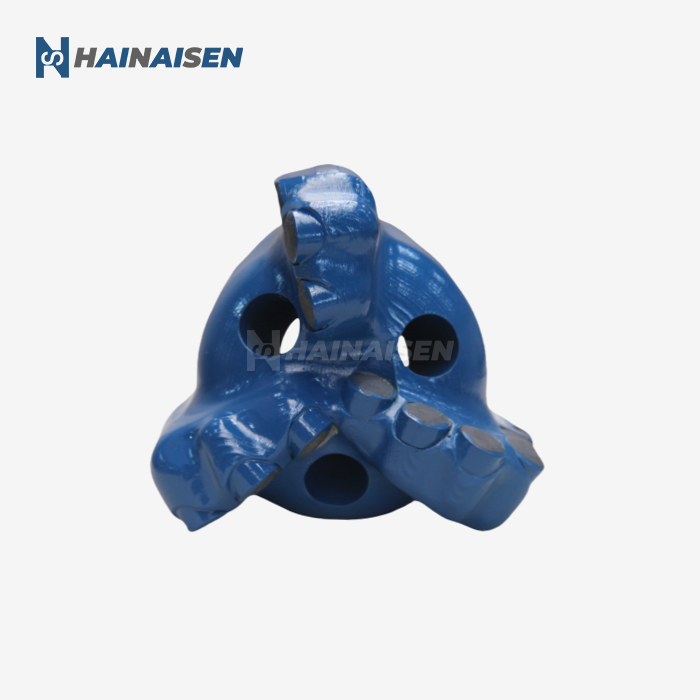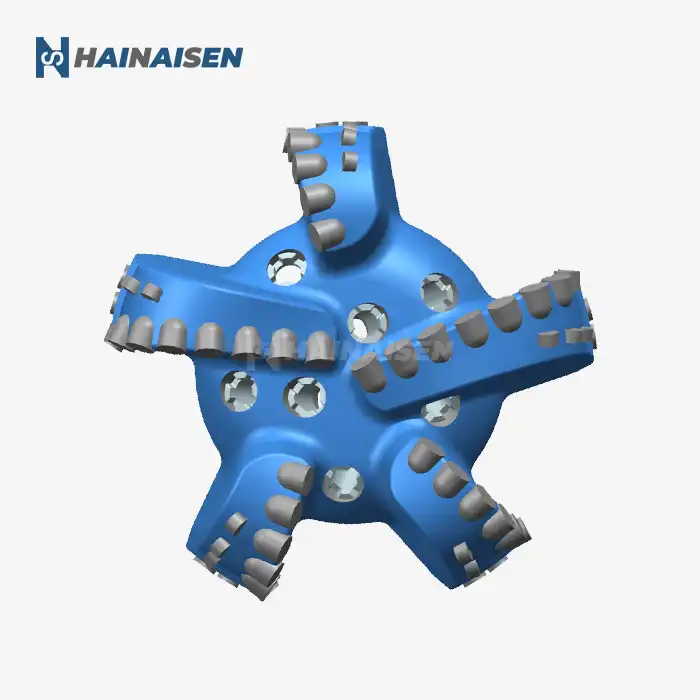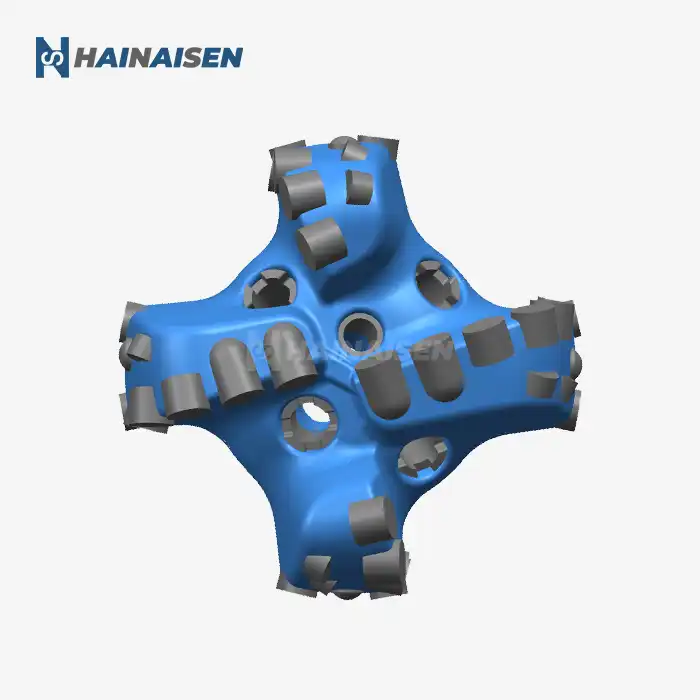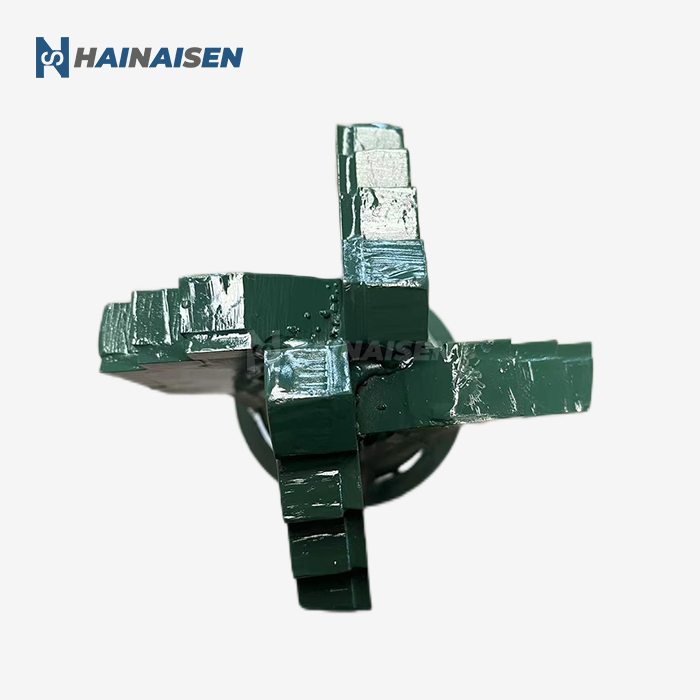What are the dominant wear modes in ultra-deep drilling?
When ultra-deep drilling, Diamond PDC Drill Bits are subjected to a complex mix of wear modes that can have a big effect on their performance and lifespan. In these harsh conditions, the main types of wear are:
Abrasive Wear
Abrasive wear is perhaps the most prevalent form of wear in ultra-deep drilling. It occurs when hard formation particles come into contact with the PDC cutters, gradually eroding the diamond layer. The severity of abrasive wear increases with depth due to higher compressive strengths of rocks and increased thermal stress on the bit.
Thermal Degradation
The bit face gets hotter as the boring depth goes down. It's important to worry about thermal damage, especially for PDC cutters. Too much heat can turn the diamond layer into graphite, which makes it less resistant to wear and less useful for cutting. To lessen this type of wear, you need advanced cooling systems and PDC materials that don't change much when they get hot.
Impact Damage
There are often big changes between hard and soft rock layers in very deep formations because the lithologies are so different. These changes can make the PDC cuts hit something quickly, which can chip or spall the diamond layer. Bit designs with shock-absorbing parts and the right placement of the cutter can help lower damage from impacts.
Chemical Wear
While less common than other wear modes, chemical wear can occur in ultra-deep environments where high temperatures and pressures facilitate chemical reactions between the diamond layer and certain formation minerals or drilling fluids. This can lead to accelerated degradation of the PDC cutters.
In order to improve bit longevity and performance in ultra-deep drilling applications, it is imperative to comprehend these predominant wear types. The efficiency and cost-effectiveness of operators' ultra-deep drilling operations can be greatly increased by tackling each wear mechanism using cutting-edge materials, creative designs, and optimum drilling settings.
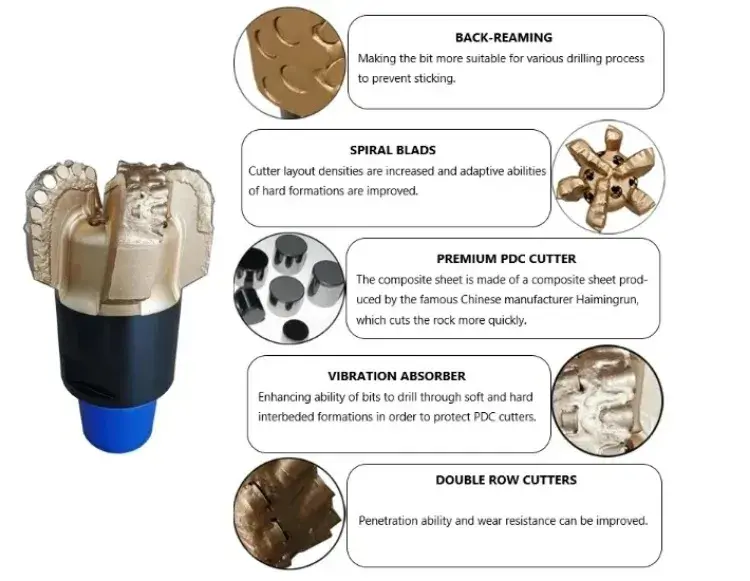
Adhesive, abrasive and diffusion wear in PDC bits
When looking at how Diamond PDC Drill Bits wear down in very deep holes, it's important to know the difference between sticky, abrasive, and diffusion wear. Each of these types of wear makes a different contribution to the overall breakdown of PDC bits, and the order in which they are most important can change based on the drilling conditions.
Adhesive Wear
Adhesive wear occurs when microscopic junctions form between the PDC cutter surface and the rock being drilled. As the bit rotates, these junctions are sheared, sometimes resulting in material transfer from the cutter to the rock or vice versa. In ultra-deep applications, the high pressures and temperatures can exacerbate adhesive wear by promoting stronger bonding at these micro-junctions.
To stop adhesive wear, companies that make PDC bits have come up with improved coatings and treatments for the cutter's surface that make it less likely for materials to stick to it. These improvements help keep the cutter's sharp edge and make it last longer in tough deep drilling conditions.
Abrasive Wear
As we already said, abrasive wear is the main type of wear that happens in ultra-deep drilling. Hard, abrasive particles in the formation remove material from the surface of the PDC cutting. The composition and compressive strength of the rocks being drilled can have a big effect on how bad abrasive wear is.
In ultra-deep applications, abrasive wear is often intensified due to:
- Increased rock hardness and abrasiveness at greater depths
- Higher contact pressures between the cutters and the formation
- Elevated temperatures that can soften the diamond layer, making it more susceptible to abrasion
To address abrasive wear, bit designers focus on optimizing cutter geometry, employing more wear-resistant diamond grades, and utilizing advanced manufacturing techniques that enhance the bond between the diamond layer and the carbide substrate.
Diffusion Wear
Diffusion wear is a less visible but equally important wear mechanism in ultra-deep drilling applications. This type of wear occurs at the atomic level, where carbon atoms from the diamond layer diffuse into the carbide substrate or surrounding materials due to high temperatures and pressures.
The effects of diffusion wear include:
- Weakening of the diamond-carbide interface
- Reduction in the thickness and integrity of the diamond layer
- Formation of graphite, which has inferior wear resistance compared to diamond
Combating diffusion wear requires a multifaceted approach:
- Development of thermally stable PDC materials that resist graphitization
- Implementation of effective cooling strategies to manage bit temperature
- Use of diffusion barriers between the diamond layer and the substrate
By understanding and addressing these three key wear mechanisms – adhesive, abrasive, and diffusion wear – manufacturers can develop Diamond PDC Drill Bits that are better equipped to withstand the extreme conditions of ultra-deep drilling. This, in turn, leads to improved drilling efficiency, reduced downtime, and significant cost savings for operators tackling challenging deep formation projects.
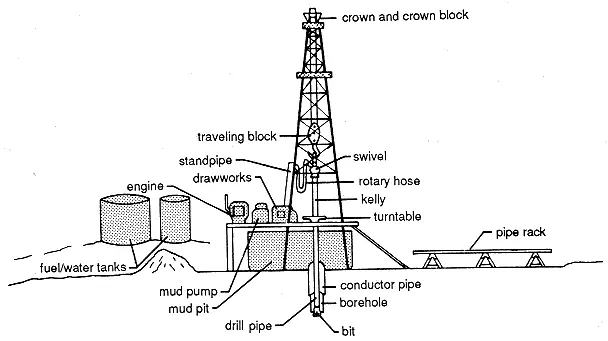
How do extreme depths impact wear patterns?
The impact of extreme depths on wear patterns of Diamond PDC Drill Bits is profound and multifaceted. As drilling operations push into ultra-deep environments, the wear mechanisms and patterns observed in PDC bits evolve in response to the intensified challenges presented by these extreme conditions.
Increased Mechanical Stress
At extreme depths, the mechanical stresses on PDC bits increase dramatically due to:
- Higher formation pressures and compressive strengths
- Increased weight on bit (WOB) required to maintain rate of penetration (ROP)
- Greater torsional forces acting on the bit
These factors lead to accelerated wear rates and can alter the typical wear patterns seen in shallower formations. For instance, cutter breakage and gross fracturing become more prevalent, especially on the shoulder and gauge areas of the bit where stress concentrations are highest.
Thermal Effects on Wear Patterns
The elevated temperatures encountered in ultra-deep drilling significantly influence wear patterns:
- Thermal degradation of the diamond layer becomes more pronounced, leading to accelerated abrasive wear
- Uneven heating across the bit face can result in differential thermal expansion, causing stress concentrations and localized wear
- Increased temperatures can soften the matrix material, potentially leading to premature loss of cutters
These thermal effects often manifest as irregular wear patterns across the bit face, with some areas showing more severe degradation than others based on their exposure to heat and cooling efficiency.
Hydraulic Influences on Wear
The hydraulic environment at extreme depths also plays a crucial role in shaping wear patterns:
- Higher bottomhole pressures can reduce the effectiveness of bit hydraulics, leading to poor cuttings removal and increased wear on specific areas of the bit
- Erosive wear from high-velocity fluid flow becomes more significant, particularly in areas with complex flow patterns
- Inadequate cooling due to hydraulic limitations can exacerbate thermal wear patterns
These hydraulic factors often result in uneven wear across the bit face, with areas receiving less effective cleaning and cooling showing accelerated degradation.
Formation-Specific Wear Patterns
Ultra-deep formations often present unique lithological challenges that influence wear patterns:
- Highly abrasive formations can lead to rapid, uniform wear across all cutters
- Interbedded formations with varying hardness can cause cyclic loading and unloading of cutters, resulting in fatigue-related wear patterns
- Chemically reactive formations may induce localized wear through corrosion or other chemical degradation mechanisms
To get the most out of Diamond PDC Drill Bit design and operation in ultra-deep uses, it is important to understand how depth affects wear patterns. By planning ahead for and dealing with these specific wear issues, manufacturers and operators can come up with ways to make bits last longer, drill more efficiently, and lower total project costs in these tough conditions.
Conclusion
Diamond PDC Drill Bits' wear processes in ultra-deep applications are hard to solve because you need to know a lot about geology, engineering, and material science. Drilling pros can make smart choices to improve bit performance and longevity by knowing the main types of wear, how adhesive, abrasive, and diffusion wear interact with each other, and how extreme depths affect wear patterns.
It is very important for oil and gas drilling companies, oil service companies, and other businesses that do ultra-deep drilling to choose the right drill bit. The Shaanxi Hainaisen Petroleum Technology Co., Ltd. creates advanced Diamond PDC Drill Bits that can handle the tough conditions of very deep uses. Our dedicated research and development (R&D) team and advanced manufacturing techniques allow us to make solutions that are tailored to the unique difficulties of your drilling projects.
No matter the situation—hard rock formations, extreme temperatures, or complicated lithologies—our team of professionals is prepared to help you choose the best drill bit configuration. Every project is different, and we strive to satisfy our clients by producing goods that go above and beyond their expectations.
Don't let wear mechanisms compromise your drilling efficiency. Contact Shaanxi Hainaisen Petroleum Technology Co., Ltd. today to discuss how our Diamond PDC Drill Bits can revolutionize your ultra-deep drilling operations. Reach out to us at hainaisen@hnsdrillbit.com to learn more about our products and services, and take the first step towards maximizing your drilling performance in the most challenging environments.
References
1. Smith, J.R. and Thompson, D.O. (2019). "Advanced Wear Mechanisms in Ultra-Deep Drilling Applications." Journal of Petroleum Technology, 71(5), 62-75.
2. Chen, X., et al. (2020). "Thermal Degradation of PDC Cutters in Extreme Depth Environments." Wear, 448-449, 203213.
3. Williams, K. and Anderson, M. (2018). "Optimizing Diamond PDC Bit Design for Ultra-Deep Well Applications." SPE Drilling & Completion, 33(3), 217-229.
4. Garcia-Leiva, M., et al. (2021). "Adhesive and Abrasive Wear Mechanisms in PDC Bits: A Comparative Study." Tribology International, 154, 106696.
5. Patel, A. and Johnson, R. (2017). "Impact of Formation Lithology on PDC Bit Wear Patterns in Ultra-Deep Drilling." International Journal of Rock Mechanics and Mining Sciences, 94, 23-35.
6. Zhang, Y., et al. (2022). "Advances in Diamond PDC Bit Technology for Ultra-Deep Drilling Challenges." Energy Exploration & Exploitation, 40(2), 535-557.



